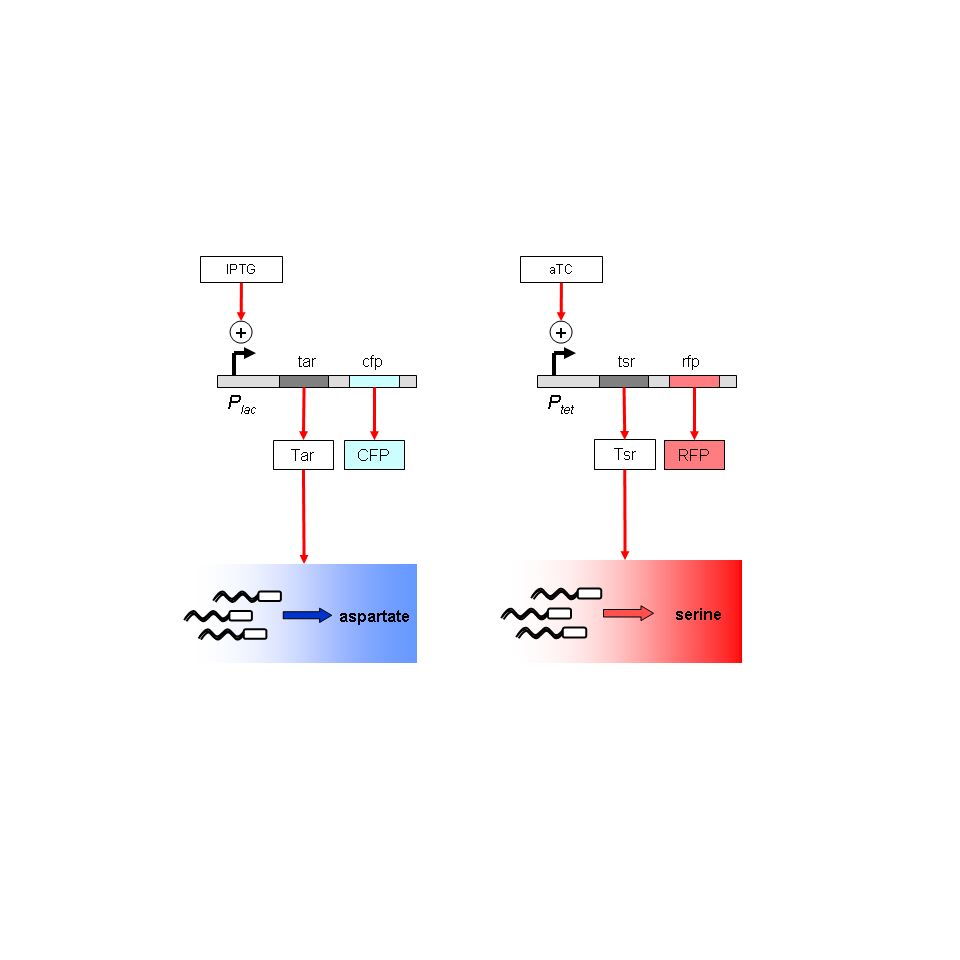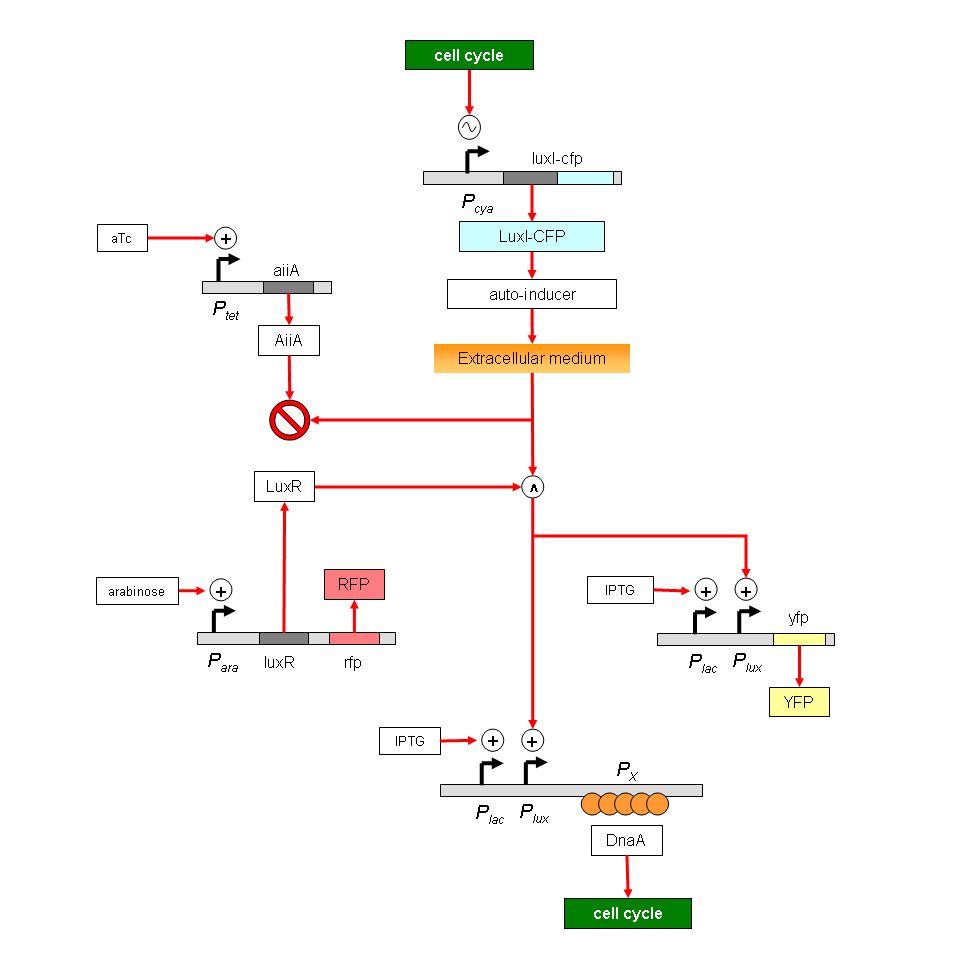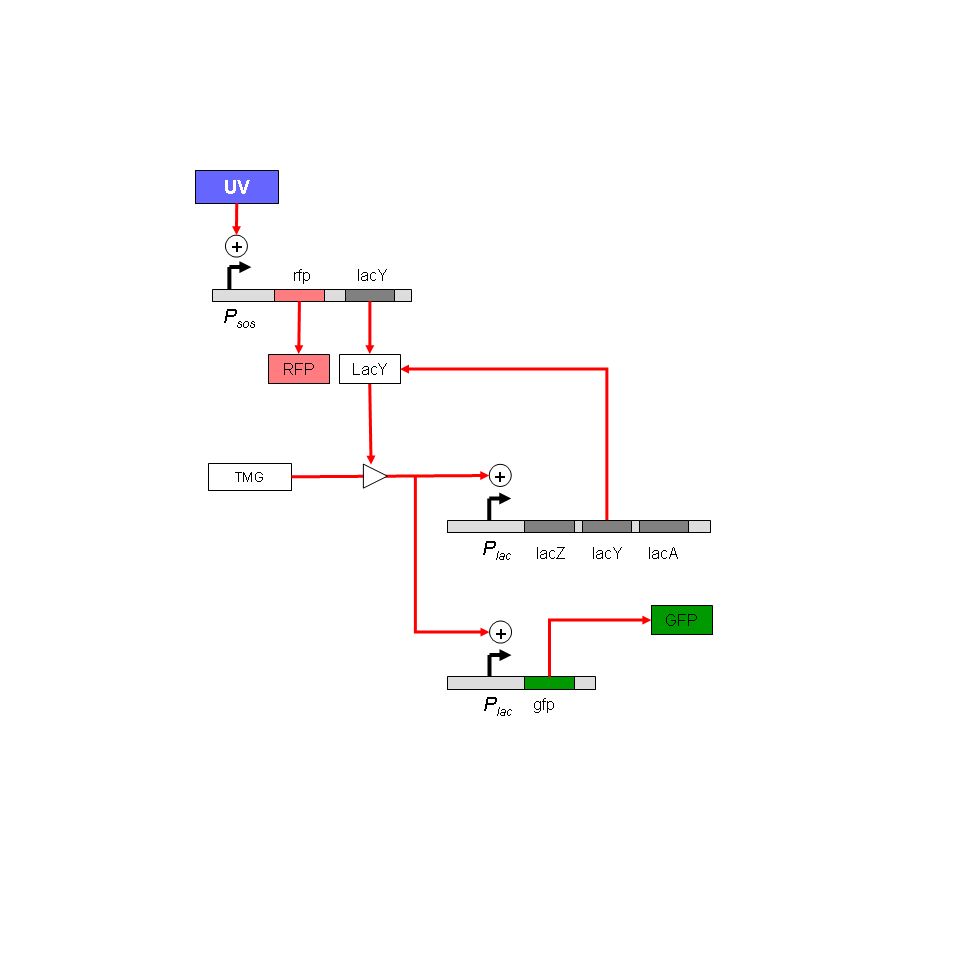Projects Ideas
From 2006.igem.org
(Difference between revisions)
| Line 2: | Line 2: | ||
===The projects=== | ===The projects=== | ||
| - | [[X-Y_chemotaxis]] | + | [[X-Y_chemotaxis|Regulation of Bacterial Chemotaxis]] |
* Use two attractants whose receptors are inducible (serine with Tar, aspartate with Tsr). These define two orthogonal axes. Use a default attractant along a diagonal to establish '-' movement. Immediate goals: To establish substrate geometries upon which multiple reproducible, stable, quantitative chemical gradients can be established; to validate default chemotaxis in the absence of MCP receptors. | * Use two attractants whose receptors are inducible (serine with Tar, aspartate with Tsr). These define two orthogonal axes. Use a default attractant along a diagonal to establish '-' movement. Immediate goals: To establish substrate geometries upon which multiple reproducible, stable, quantitative chemical gradients can be established; to validate default chemotaxis in the absence of MCP receptors. | ||
[[Image:ncbs_igem2006_net1.jpg|thumb|none|160 px]] <br/> | [[Image:ncbs_igem2006_net1.jpg|thumb|none|160 px]] <br/> | ||
| - | [[Synchronization of bacterial cell cycles]] | + | [[Synchronization_of_Cell_Cycle|Synchronization of bacterial cell cycles]] |
*Synchronization of bacterial cell cycles. Use a cell cycle-dependent promoter to drive a LuxI-LuxR based cell-cell signal. Use regulation of replication initiator DnaA to modulate cell cycle in receiver cells. Immediate goals: To determine if candidate promoters oscillate; to regulate DnaA levels. | *Synchronization of bacterial cell cycles. Use a cell cycle-dependent promoter to drive a LuxI-LuxR based cell-cell signal. Use regulation of replication initiator DnaA to modulate cell cycle in receiver cells. Immediate goals: To determine if candidate promoters oscillate; to regulate DnaA levels. | ||
[[Image:ncbs_igem2006_net2.jpg|thumb|none|160 px]] | [[Image:ncbs_igem2006_net2.jpg|thumb|none|160 px]] | ||
<br/> | <br/> | ||
| - | [[Monitoring long-term effects of UV exposure]] | + | [[Memory_effects_of_UV_exposure|Monitoring long-term effects of UV exposure]] |
*Analysis of stress responses in biofilms. Connect stress response system to a lac based bistable GFP reporter. This allows transient expression at a stress-response promoter to trigger persistent expression of GFP. Immediate goals: To standardize biofilm assay; to design other experiments in which such a construct would be useful, especially using a cell-sorter. | *Analysis of stress responses in biofilms. Connect stress response system to a lac based bistable GFP reporter. This allows transient expression at a stress-response promoter to trigger persistent expression of GFP. Immediate goals: To standardize biofilm assay; to design other experiments in which such a construct would be useful, especially using a cell-sorter. | ||
[[Image:ncbs_igem2006_net3.jpg|thumb|none|160 px]] | [[Image:ncbs_igem2006_net3.jpg|thumb|none|160 px]] | ||
Revision as of 08:55, 28 October 2006
The projects
Regulation of Bacterial Chemotaxis
- Use two attractants whose receptors are inducible (serine with Tar, aspartate with Tsr). These define two orthogonal axes. Use a default attractant along a diagonal to establish '-' movement. Immediate goals: To establish substrate geometries upon which multiple reproducible, stable, quantitative chemical gradients can be established; to validate default chemotaxis in the absence of MCP receptors.
Synchronization of bacterial cell cycles
- Synchronization of bacterial cell cycles. Use a cell cycle-dependent promoter to drive a LuxI-LuxR based cell-cell signal. Use regulation of replication initiator DnaA to modulate cell cycle in receiver cells. Immediate goals: To determine if candidate promoters oscillate; to regulate DnaA levels.
Monitoring long-term effects of UV exposure
- Analysis of stress responses in biofilms. Connect stress response system to a lac based bistable GFP reporter. This allows transient expression at a stress-response promoter to trigger persistent expression of GFP. Immediate goals: To standardize biofilm assay; to design other experiments in which such a construct would be useful, especially using a cell-sorter.


